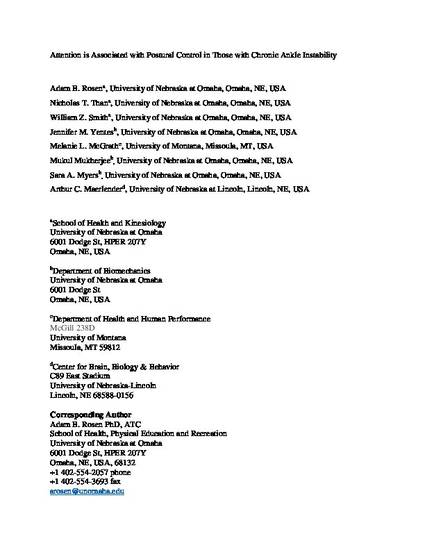
Chronic ankle instability (CAI) is often debilitating and may be affected by a number of intrinsic and environmental factors. Alterations in neurocognitive function and attention may contribute to repetitive injury in those with CAI and influence postural control strategies. Thus, the purpose of this study was to determine if there was a difference in attentional functioning and static postural control among groups of Comparison, Coper and CAI participants and assess the relationship between them within each of the groups. Recruited participants performed single-limb balance trials and completed the CNS Vital Signs (CNSVS) computer-based assessment to assess their attentional function. Center of pressure (COP) velocity (COPv) and maximum range (COPr), in both the anteroposterior (AP) and mediolateral (ML) directions were calculated from force plate data. Simple attention (SA), which measures self-regulation and attention control was extracted from the CNSVS. Data from 45 participants (15 in each group, 27=female, 18=male) was analyzed for this study. No significant differences were observed between attention or COP variables among each of the groups. However, significant relationships were present between attention and COP variables within the CAI group. CAI participants displayed significant moderate to large correlations between SA and AP COPr (r=-0.59, p=0.010), AP COPv (r=-0.48, p=0.038) and ML COPr (r=-0.47, p=0.034). The results suggest a linear relationship of stability and attention in the CAI group. Attentional self-regulation may moderate how those with CAI control postural stability. Incorporating neurocognitive training focused on attentional control may improve outcomes in those with CAI.
Available at: http://works.bepress.com/adamb_rosen/14/
This version of the article was released under the Creative Commons Attribution Non-Commercial No Derivatives License 4.0. The original article can be found here: https://doi.org/10.1016/j.gaitpost.2017.02.023.